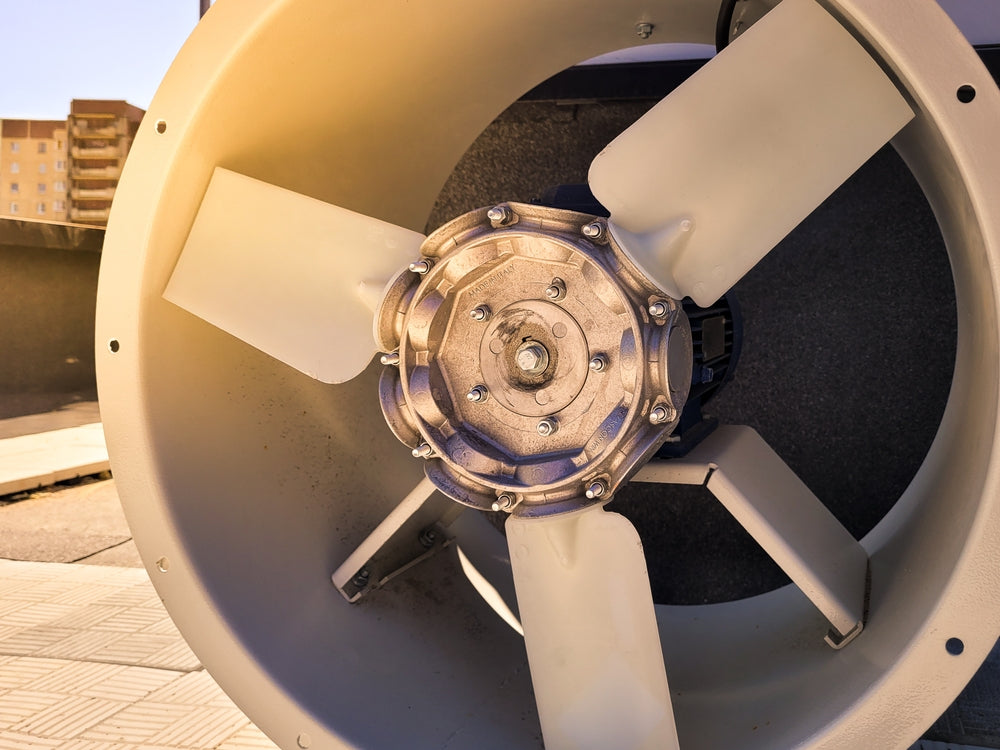
How Axial Fans Improve Airflow in Industrial Settings
Axial fans are a go-to solution in many industrial environments, essential for keeping air moving and maintaining safe, comfortable conditions. Whether cooling down machinery, ventilating large spaces, or simply improving overall airflow, these fans get the job done.
But how exactly do they work, and why are they so effective in industrial settings?
Let’s dive into the benefits, applications, and best practices for using axial fans to enhance airflow in your facility.
What is Airflow and Why Does It Matter?
First things first: what is airflow? In simple terms, airflow is the movement of air through a space. Proper airflow helps regulate temperature, removes contaminants, and keeps workers comfortable and safe. In an industrial setting, managing airflow is crucial—without it, machinery can overheat, air quality can plummet, and overall productivity can take a hit.
The Role of Axial Fans in Boosting Airflow
Axial fans stand out because they are designed specifically for moving large volumes of air at lower pressures. They pull air in through the fan blades and push it out along the same axis, creating a steady, powerful flow. This makes them perfect for situations where you need to move a lot of air without generating a lot of noise or consuming too much power.
Key Features of Axial Flow Fans:
- High Airflow Capacity: Axial fans are known for moving air efficiently, making them ideal for industrial settings where ventilation and cooling are critical.
- Cost-Effective: These fans consume less power than other types, which can mean lower energy bills over time.
- Space-Saving Design: Their compact form allows installation in tighter spots where other fans might not fit.
Common Uses of Axial Fans in Industrial Settings
So, where exactly do axial fans shine in an industrial setting?
1. Industrial Ventilation Systems
Axial fans are widely used in ventilation systems to keep air fresh and circulating. Pulling in clean air and expelling exhaust help remove dust, fumes, and other pollutants, making the environment safer for everyone.
For example, industrial axial exhaust fans are engineered to handle heavy-duty ventilation tasks, ensuring that stale air is continuously replaced with fresh air.
2. Cooling Machinery and Equipment
High-powered machines generate heat, leading to breakdowns if not properly managed. Axial fans help keep temperatures in check, ensuring machinery runs smoothly and safely. Industrial axial ceiling fans are ideal for cooling larger areas, enhancing airflow around equipment, and preventing overheating.
3. HVAC Systems
Axial flow fans play a pivotal role in heating, ventilation, and air conditioning (HVAC) setups. They distribute air throughout a facility, improving comfort and energy efficiency. HVAC axial flow fans are designed to work seamlessly within HVAC systems, helping to maintain consistent temperatures in large spaces.
Benefits of Using Axial Fans for Airflow Improvement
Axial fans offer several advantages over other fan types, particularly in industrial settings:
High Efficiency at Lower Costs
One of the biggest draws of axial fans is their efficiency. They move more air using less power, making them a cost-effective choice for businesses looking to manage operational costs.
Customisable to Fit Specific Needs
Axial fans come in various sizes and designs, allowing them to be tailored to meet the specific airflow needs of any industrial application. Whether you need something compact for a tight space or a more robust fan for larger jobs, there’s likely an option that fits.
Quiet Operation
No one likes working in a noisy environment. Modern axial fans are designed with noise reduction in mind, operating quietly even when moving large volumes of air. This makes them ideal for use in areas where reducing noise is important.
Easy Maintenance and Longevity
Maintaining an axial fan is straightforward. Regularly cleaning the blades and checking the axial fan motor for issues are usually all required to keep these fans running efficiently for years.
How to Maximise the Performance of Your Axial Fans
Want to get the most out of your axial fans? Here are some tips to optimise their performance:
Install Correctly
Proper placement is key. Ensure the fan is installed so it can circulate air effectively without obstructions. Mounting the fan at the correct height and orientation can significantly improve airflow.
Keep it Clean
Dust and debris can clog the fan blades and hinder performance. Regular cleaning, especially in industrial settings where dust is prevalent, helps maintain efficiency.
Monitor and Adjust Airflow
Using speed controllers can help you adjust airflow based on your specific needs. This saves energy and prolongs the fan's life by preventing it from working harder than necessary.
Regular Inspections
Perform regular checks on the fan motor and blades to ensure they function correctly. Addressing minor issues early can prevent more significant problems down the line.
